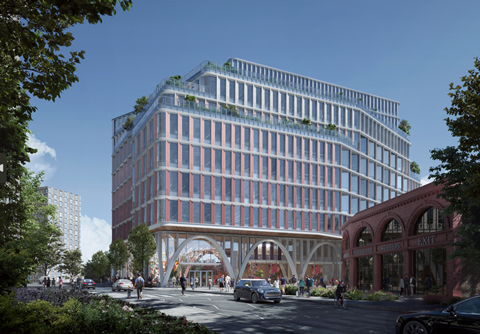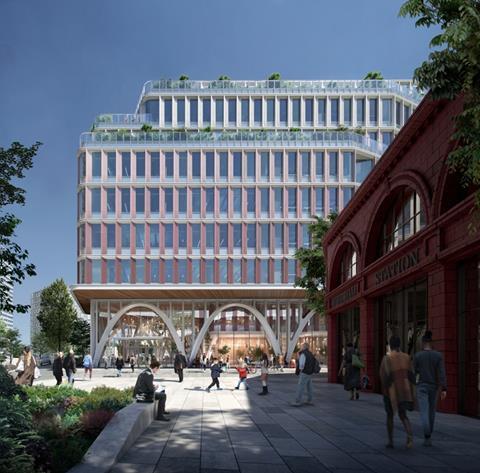Planning application for nine-storey scheme in Islington submitted by developer Delancey

KPF has unveiled its designs for a life sciences building proposed as the latest addition to the King’s Cross Knowledge Quarter.
The firm has submitted a planning application for developer Delancey for a nine-storey building at 176-178 York Way in Islington that would contain 18,000 sq m of floorspace.
The scheme would be built above five underground rail tunnels running as close as 4.5m beneath the surface of the site, requiring a long-span arch designed by Arup to distribute the load of the building.
Visible arches have also been designed for the facade of the building as a reference to the nearby Leslie Green-designed York Way tube station, which has been closed since 1932.

The proposal includes 12,000 sq m of research and laboratory space, 1,200 sq m of affordable workspace, a flexible community and events space, flexible makers’ space.
It also includes public realm improvements including a new route through Bingfield Street and widened pavements on Randall’s Road.

KPF design principal Elie Gamburg said the scheme was an opportunity to stitch together existing communities and new developments on both sides of York Way.
The project team also includes landscape consultant Publica Associates, project manager and principal designer Gardiner & Theobald, sustainability consultant Atelier Ten and laboratory planner Buro Happold.
KPF is also behind one of the UK’s largest life sciences schemes, the 23-storey One North Quay tower in Canary Wharf which was given the green light last July.
Other recently revealed life sciences schemes include Purcell’s plan for a five-storey scheme in Oxford and Scott Brownrigg’s £35m proposals to expand Wootton Science Park in Oxfordshire.




























No comments yet